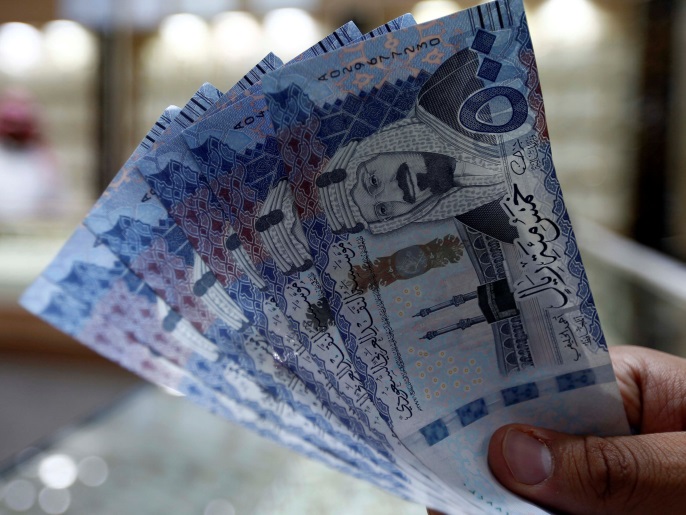Foreign reserves of the Saudi Arabian Monetary Agency (the Central Bank) fell 0.4% last June, to 1677.9 billion riyals ($ 447.4 billion), compared to 1684.9 billion riyals ($ 449.3 billion) in May, according to the Saudi central bank’s data. .
On an annual basis, foreign reserves fell by 13% during last June, compared to the same month last year, and this decline came as a result of a decrease in investments in securities abroad by about 12.8%.
The total investments in securities abroad - which represent about 62% of the total foreign assets of the Kingdom - amounted to about 1.03 trillion riyals ($ 275 billion) last June.
Last May, Saudi foreign exchange reserves increased slightly, after a record low in the previous two months.
Saudi Arabia lost $ 50 billion in foreign reserves during the past March and April; $ 40 billion of it has been transferred to the Public Investment Fund (the State's sovereign fund), to support the fund's investments abroad, according to Anadolu Agency.
In the same context, a report from the Ministry of Finance on the quarterly performance of the budget showed that Saudi Arabia recorded a deficit of 109.2 billion riyals ($ 29.12 billion) in the second quarter of this year, with the public treasury affected by the drop in oil prices.
During the first half of this year, the Saudi budget recorded a deficit of 143.3 billion riyals (38.2 billion dollars).
The Corona Virus crisis has damaged non-oil sectors in the world's largest oil exporter this year, which exacerbates the impact of low historical levels of crude prices on the economy.
Oil revenues to Saudi Arabia fell by 45% year on year in the second quarter, to $ 25.5 billion, while total revenues fell by 49%, to $ 36 billion, according to Reuters reported.
austerity
The report showed that total expenditures in the second quarter decreased 17% year on year, to about $ 65 billion.
"A significant reduction in spending will be necessary to contain the deficit," said Monica Malik, chief economist at Abu Dhabi Commercial Bank, adding that "the government's active position has already been reflected in austerity measures announced last April, but these measures will have a negative impact on the outlook." Recover. "
In the face of a severe recession this year, Saudi Arabia introduced measures such as stopping the cost of living allowance for state employees, and doubling the value-added tax by 3 times, to 15%, to boost revenue.
Economists said the sharp increase in the value-added tax could delay the recovery, while lifting restrictions aimed at curbing the spread of the Coruna virus. The International Monetary Fund estimated that the Saudi economy may contract by 6.8% this year.
Borrowing wave
The Finance Ministry report showed that Saudi Arabia - which recorded a budget deficit of $ 9 billion in the first quarter of this year - collected $ 12 billion from international markets so far this year, and borrowed 41.1 billion riyals (about $ 11 billion) from the local market.
Finance Minister Mohamed Al-Jadaan said this month that the kingdom plans to go to the international debt market at least once this year.
Budget data also showed that in addition to borrowing, the government used about $ 13 billion in government reserves in the second quarter to finance the deficit. This figure is largely in line with the $ 32 billion reserve reserve ceiling that the government is targeting for this year.
According to the Ministry of Finance data, the Saudi public debt rose 21% to 819.9 billion riyals ($ 218.6 billion) at the end of the first half, compared to 677.9 billion riyals ($ 180.8 billion) at the end of 2019.
Saudi Arabia expected a rise in its budget deficit this year to between 7 and 9%, compared to 6.4% in previous forecasts.
Saudi Arabia announced the 2020 budget with spending of 272 billion dollars, compared to revenues of 222 billion dollars, anticipating a deficit of 50 billion dollars.

